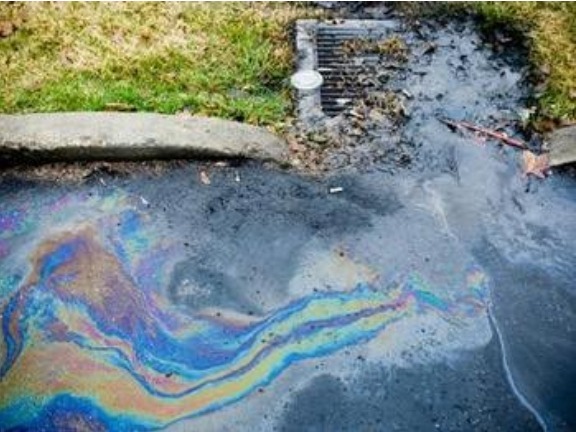Fixing the Leaks in U.S. Water Infrastructure

“The way you can identify a broken paradigm,” says George Gilder, “is that the problem gets worse the more money you spend on it.”
George Gilder is a futurist and a technology prophet of sorts. I’m sure George didn’t have U.S. water infrastructure in mind when he made the comment above, but it certainly applies. Crumbling infrastructure and unpredictable weather events are stressing urban water systems to the brink of failure, with regulators calling for more than $700 billion in capital improvements for our nation’s water infrastructure over the next few years.
Hefty investment is needed in water infrastructure to ensure a clean, more secure water future. But simply throwing capital at larger versions of outdated solutions is bad policy. You don’t put a band-aid on a puncture wound.
The average citizen doesn’t think much about it, but pollution from stormwater runoff is arguably the most pervasive environmental issue that cities face today. Ironically, about 860 municipalities around the U.S., discharge raw sewage into clean waterways by design. These old combined sewer systems are forced to handle sewage, wastewater, and stormwater within the same arrangement. So when rainfall can’t soak into the ground, it runs off of pavements and into stormwater collection drains by design.
Outdated Design
Relying solely on this type of water infrastructure may have been feasible decades ago and before cities were sprawling and caked with pavement. Today, our cities have urbanized to the point where non-draining, hard surfaces make up the overwhelming majority of land cover. Three-quarters of Philadelphia, for example, is impervious. So when it rains, huge volumes of runoff finds its way to stormwater drains, picking up every pollutant on the pavement along the way. The more pavement, the more polluted runoff for these combined sewer systems to handle.
Pavement is ubiquitous because it’s useful. And until Elon Musk’s Hyperloop arrives or we’re traveling like the Jetsons with Point-to-Point Aerial Transport, pavements in the form of streets, sidewalks, and parking lots will continue to be crucial for urban mobility and transporting people and goods. So perhaps we should rethink how we design stormwater infrastructure to account for this. It probably starts with an understanding that the old approach of “moving water out” hasn’t just led to mass pollution of waterways, it’s also increased the likelihood of major flooding….and worse still, large coastal cities are literally sinking as aquifers get robbed of natural recharge.
Time for a Paradigm Shift
From my vantage, there is a general feeling of cities scrambling to become more “resilient” as the climate alarm shrieks. But like any meaningful issue, the water problem can’t be solved just with politician’s logic — “we must do something. This is something. Therefore we must do this!” Because by itself, this is proving to be ineffective.
Fortunately, it’s possible to innovate our way to a cleaner, more secure water future. And while “innovation” usually connotes the latest new technologies, it’s the large governing institutions that hold the key to innovation. The key then, is for these institutions to simply embrace it.
Cities, regulators, and large institutions can be painfully path dependent when it comes to embracing new approaches. There are good reasons for this, which we won’t get into here. Fortunately, we’re starting to see progress from some cities as they make more meaningful investments in green infrastructure. We’re seeing vitality in the private sector with an array of startups advancing various software and hardware technologies for monitoring runoff and sewage overflows. There are new permeable materials being developed that can manage stormwater right on-site, returning it naturally into the ground below. And there’s even creative early stage financing arms, helping connect these innovative startups with the capital they need to provide their solutions to the marketplace.
We need more of all of this because what’s at stake is tremendous. Private companies need to continue to relentlessly innovate, capital needs to flow to the development of these ideas, and institutional decision makers need to take a shot on new technologies and approaches when given the chance. It’s time to shift the paradigm because a purported $1 Trillion dollar need for improving water infrastructure is a $1 Trillion opportunity to sustain our most valuable resource.
solutions for change
AquiPor just received 3rd party testing results on the absorption rate of our technology. Why is this important? According to ASTM C […]
Urban flooding, aging infrastructure, and polluted waterways are symptoms of a broken stormwater system—one that wasn’t built for the climate challenges cities […]
When LA turned it’s river into a storm drain Starting in the 1930’s Los Angeles turned the LA river into a big […]
Copyright © 2025 AquiPor Technologies. Site designed & developed by Houdini Interactive.